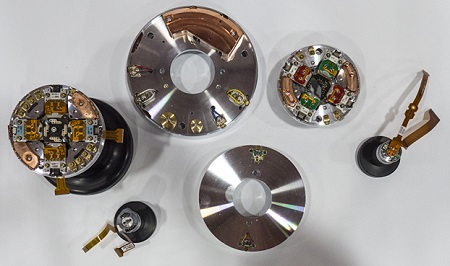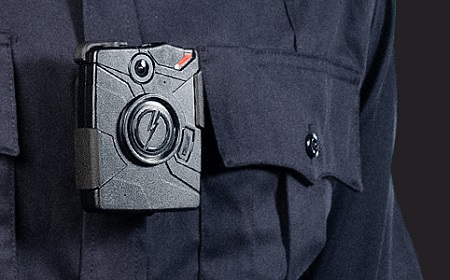Broadcast Engineering Extra's Ten Biggest Stories of 2014
ALEXANDRIA, VA.—Now that 2014 is streaking to a close, it's natural to look back at the most memorable things that happened this year. There were plenty of them too, in what looks like a transitional year between relatively stable broadcast operations and a future that involves the unknowns of repacking, license auctions, streaming and the on-rush of new ATSC standards. As in other recent years, there has been a continual consolidation of manufacturers within the industry, with one major trend-buster in 2014: Harris Broadcast's split into GatesAir and Imagine Communications.
It would be hard to pick another year with this much activity swirling around the very nature of television broadcasting. With that in mind, this is our view of the top 10 stories reported by Broadcast Engineering Extra:
10. SD Video Lives: A Q&A with Pat Johnston of AheadTek

Video heads and other consumable parts for SD VCRs are still available, thanks to companies like AheadTek. There are still thousands of you out there with slowly failing but absolutely necessary standard-definition videotape recorders. It is still possible to get replacement parts for them, thanks to companies like AheadTek. In this BE Extra Q&A, Pat Johnston gives a peek into the company's work to keep videotape alive.
9. Preparing for the Channel Repack: An Interview with GatesAir's Rich Redmond
Repacking broadcast television's remaining channels has been a continuous story though the year. So what can a station do today to prepare for the consequences of the repack? Rich Redmond from GatesAir offers some advice and common sense.
8. Hitachi Kokusai Electric Revives Comark
Get the TV Tech Newsletter
The professional video industry's #1 source for news, trends and product and tech information. Sign up below.
Comark, a well-known transmitter manufacturer that had fallen on hard times, was acquired by Hitachi, which has at least one other transmitter company (Linear) it its stable. Perhaps banking on increased transmitter sales due to repacking and the license auction, Hitachi is positioning itself to be a player in this segment of the industry.
7. DirecTV Debuts 4K Ultra HD Service
If 4K/UHD is to be a success, there must be content and a way to distribute it to viewers. DirecTV just announced that it will deliver 4K directly to viewers' homes via satellite.
6. Lenses for 4K Shooting: An Interview with Fujifilm's Thom Calabro
4K cameras are becoming fairly common and even affordable. However, what about lenses designed for 4K/UHD production? Fujifilm's Thom Calabro answers some questions about the next generation of television lenses.
5. Police, Body Cameras and Broadcast News

This Taser Axon body camera is one example of what the well-dressed police officer will wear in the near future. A monster story in 2014 has been the tension between police and the public they serve. With the cost of cameras lower than ever, it's now possible to equip police with body-worn cameras that will record their citizen interactions and eliminate much of the "he said/I said" dialog we get today. Of course, some of this video will find its way to broadcast news operations, and all of it will need to be properly stored, managed and archived.
4. HEVC vs. VP9: Which Will Win?
If we are going to have broadcast 4K/UHD (and that is not a given at this point), we will need to adopt a new compression scheme that is much more efficient than MPEG-2 used today by ATSC 1.0. Everyone has been talking about HEVC but what about VP9, a Microsoft-developed compression technology that the computer giant gives away? It's time to start learning about these two compression schemes and how they might impact the future.
3. News Audio: A Conversation With Wheatstone's Phil Owens
There's more to advanced television than video… there's also audio. In this dialog, Phil Owens of Wheatstone addresses networking and automation for a modern audio plant. Is a person behind the console a necessity?
2. ATSC 3.0: Where We Stand
Rich Chernock, one of the principals working on the ATSC 3.0 standard, explains where things stand today. Of course, there is also an ATSC 2.0 standard under development and it should arrive before work on the ATSC 3.0 standard is completed. Still, with 4K broadcasting now a demonstrated possibility, will there be pressure to skip the backward-compatible 2.0 standard and leapfrog to 3.0? Not only 4K broadcasting is in play here—OTA demonstrations of ATSC 3.0 have shown it to be much more robust than 2.0 for mobile operation.

In the Kohl Center in Madison, Wis., Tim Laud of LG/Zenith shows Futurecast's 720p reception. 1. Quincy Group, LG/Zenith, Gates Air Demo 4K Futurecast
Since broadcasting's core nature is about…well, broadcasting, all the discussion of 4K broadcasting leads nowhere unless there is an actual demonstration that the technology works in the real world without re-inventing the transmission wheel. GatesAir and LG/Zenith demonstrated that before a couple dozen interested observers in an early morning October test at WKOW in Madison, Wis. It worked and it worked well… at a reasonable cost in terms of hardware and installation.
That's a look at our top-10 choices. Feel free to share your picks in the comments, and to also suggest subjects for our Q&As and articles. You can leave suggestions here in the comments, or you can e-mail me at bkovacs@nbmedia.com.
We hope you have an excellent 2015!
Bob Kovacs is the former Technology Editor for TV Tech and editor of Government Video. He is a long-time video engineer and writer, who now works as a video producer for a government agency. In 2020, Kovacs won several awards as the editor and co-producer of the short film "Rendezvous."

